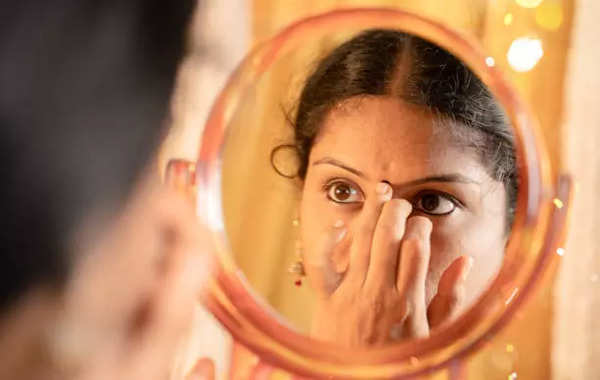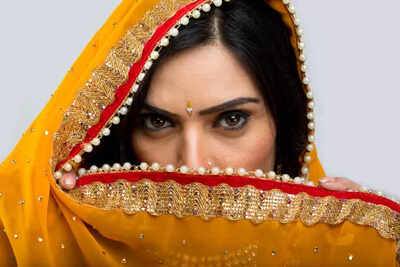Bindi, this small multicolored point on the forehead – is much more than just a fashionable choice – though definitely adds a unique touch! It is a symbol, rich in culture, history and even a little science. The word “bindi” comes from the Sanskrit word “bindu”, which means “point” or “point”. But this is not a simple point – it has a deep value in Indian traditions. In many cultures, it is a spiritual awakening and connected with the “third eye”, the center of wisdom and intuition. Bindi is a sign of communication with the Divine and Internal force. This is a point with a lot of meaning that has developed largely over time. Let’s study how this simple sign carries such a rich heritage!
Tradition and symbolism

Let’s start with the basics: Bindi has deep roots in Hindu culture. It traditionally symbolized the “third eye”, the seat of wisdom, in the middle of the forehead. It is believed that this place is an energy center in the body known as “ajna” or “chakra -brod” associated with intuition, knowledge and spiritual understanding. Wearing Bindi was a way of recognizing this connection with the Divine, and over time it became a symbol of happiness, well -being and spiritual attachment.
In addition to its spiritual importance, Bindi also carries social and cultural meanings. Married women often wear Bindi to indicate their family status similar to a wedding ring. In particular, the Red Bindy is related to the goddess of the SHct, symbolizing love, fertility and protection. Young girls, however, can wear multi -colored or decorative bindu, which reflects the easier part of the tradition.
A note of style
Bindi has deep traditional roots, but today it is also a fashionable fashion accessory. You can find Bindis in different colors, sizes and shapes that often match the outfit to add a touch of sparks or contrast. Designers accepted Bindi, making it popular not only in India but around the world.
What makes Bindi so special, it is its versatility – whether it is a simple point, a gem or a detailed design, it can be as thin or brave as the owner wants. For many, this is a way to show your personality while remaining in touch with your culture.
Scientific and Health Benefits Bindi

In Vedic times, Bindi, known as “Tilak”, was used during the rituals as a symbol of the divine blessing. It was placed on Ajna ChakraOr the “third eye”, which is believed to be the center of intuition and spiritual understanding. Today, wearing Bindi continues to offer both cultural and health. It is known that this will help relieve headaches and clean the sinuses, exerting gentle pressure on the forehead. It is said that Bindi also improves vision, skin health and even hearing, stabilizing energy flow. This helps reduce stress, increase concentration and increase memory. Essentially, Bindi has not only spiritual roots, but also supports mental clarity, emotional equilibrium and general well -being.
Cultural evolution and modern use
As the world becomes more related, Bindi crossed cultural boundaries. Now it is perceived by people from different layers, especially in the West, where it is often regarded as a symbol of Bohemian style or spirituality. Bollywood films and pop culture also helped to promote Bindi, which made it a symbol of femininity, elegance and expansion of rights and opportunities. For example, Selena Gomez wore Bindi in her song “Come and Get”, combining it with Indian classical background music, which helped bring more attention to its cultural significance and beauty, as well as connecting with the Indian audience.

So, why do Indian women put Bindi on the forehead? It is not just about fashion; It is about accepting a rich cultural tradition that brings spiritual, aesthetic and health -related benefits. Bindi can add a pushed out of the outfit, connect the carrier to internal wisdom or pay tribute to ancient customs. Whether it is a simple point or colorful design, Bindi is much more than just fashion. This is a meaningful assessment with a rich history and great meaning.











